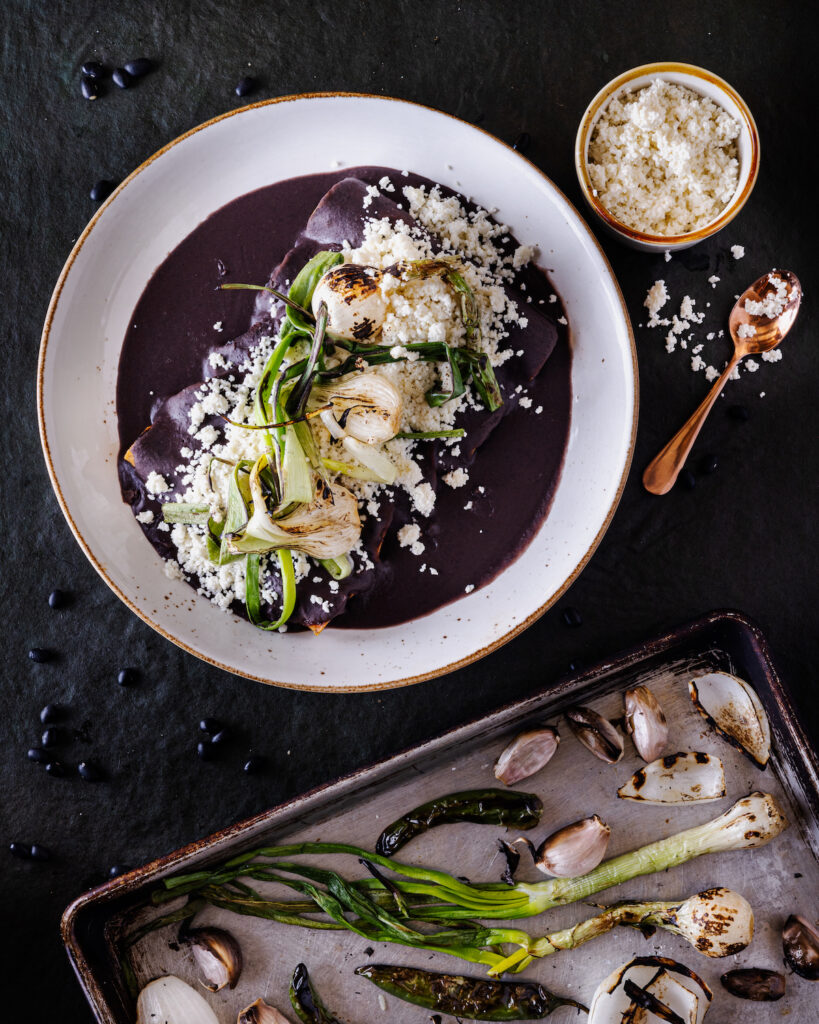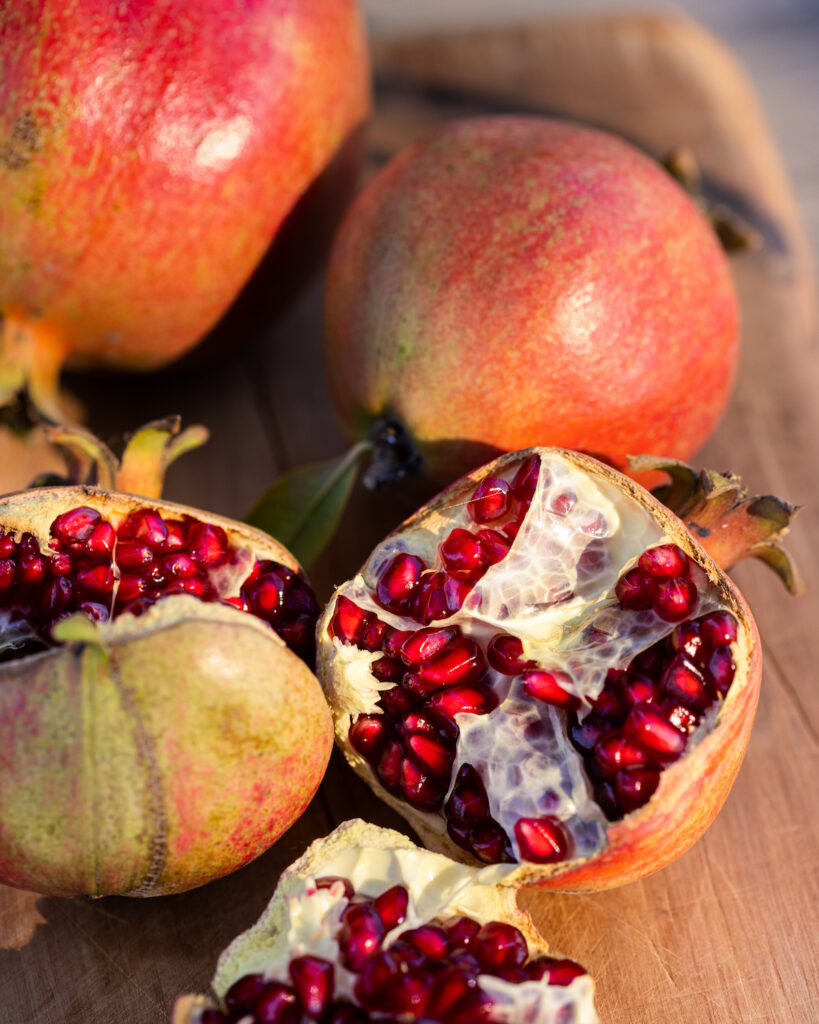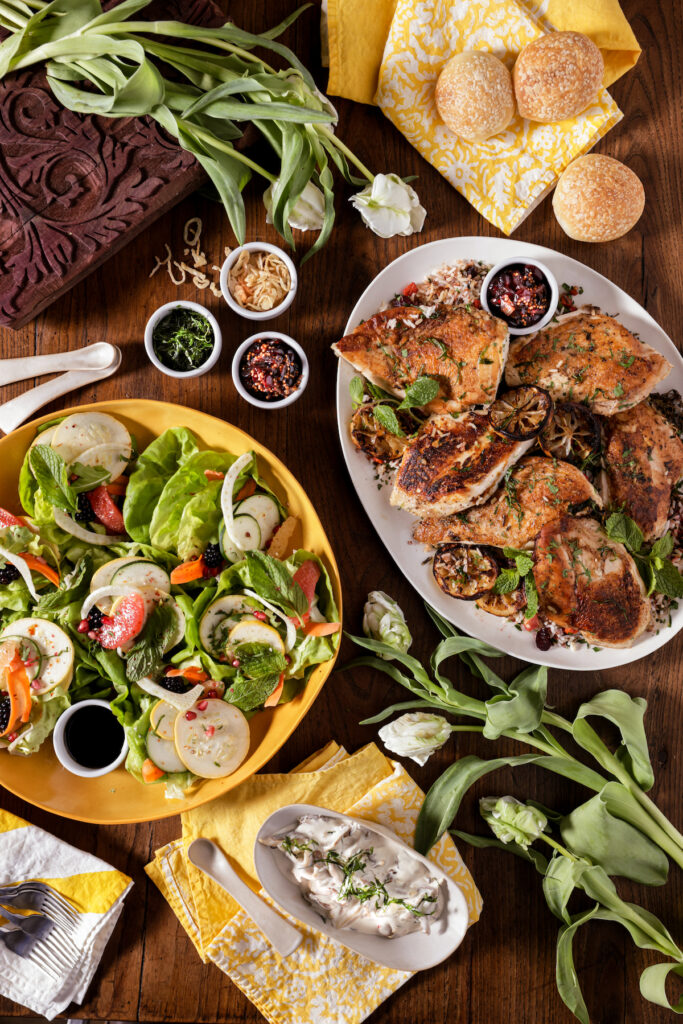In interviews with five photographers from the United States and Canada, Mark Oppenheimer explores an essential element of 21st-century visual culture: the food photo. Whether taken by a professional with an expensive lens and a support team, or by a passionate amateur wielding a smartphone, images of food abound in our world. Settle in for a good read about what motivates the pros, and what they think makes their work not just good, but deliciously transformative.
Tira Howard
As a child, Tira Howard captured her world with a point-and-shoot camera. After studying writing and acting in college, she returned to photography in 2013. She once considered being a war correspondent but abandoned the idea after her husband reminded her of her family responsibilities. Tira and her family reside in Santa Fe.

In many of your shots there is an implied unseen presence round the edge of frame.
I feel like there’s something unnerving about the desire to have everything revealed. I enjoy secrets, and having secret worlds to exist in, because I think that makes what’s visible so much more interesting. I want there to be questions still left to answer at the end of your interaction with one of my images.
How would you describe working on set with your team?
With food photography, you’re coming to it from a place in time. You’re in your life, meeting other people who are participating in the creation of the image. You’re working as a team with a chef or someone who’s styling the scene. We converge around a plate of food that’s not going to last longer than the few minutes we’re there to photograph it.

What is the story you want to tell?
It’s all so temporary, so fleeting. And the eating of what’s in the image, the implied eating of it, is an invitation. In a photograph, that invitation just keeps on being extended. It’s always an invitation to pleasure.
How do you engage a viewer’s emotions in the shot when you can only imply the other senses?
You’re telling another human’s brain to read the frame in a way that feels good. Moving the eye from left to right, with lighting and composition, letting the rule of thirds work, following the kind of spiraling of the Fibonacci sequence, because it’s naturally occurring. And it often elicits its own emotional response. Pleasure, like sweets, is universally enjoyed.

Would you talk a little bit more about yourself working as an artist?
I think a lot of times it’s easy for artists who are trying to make a living to lose track of the meaning of what they’re doing. I want to feel the importance of every little stupid thing I have to do to arrive at an image that feels good. I want to make everything important. I want to elevate everything that interests me.
What do you hope to accomplish with your work?
More than anything, I want to have meaning in my life, and do meaningful work. It’s a tightrope, an almost impossible task, but I absolutely want, on the day of my death, to have at least some work that’s left behind that has meaning for other people, even the commercial things I do.

Food shots can seem very isolated, depicting a world that’s clinical, lacking a sense of human interaction.
I struggle to stay away from a clinical kind of documenting. That’s not what I’m interested in. I’m interested in that moment before you take your first bite, or if you’re in the middle of a bite, or the origin of the dish. I don’t understand the appeal of just showing a plate of food lit very clinically, because it looks to me like it’s just a crime scene photo.
Story by Mark Oppenheimer / Photography by Tira Howard
Subscribe to TABLE Magazine’s print edition.

